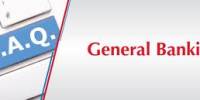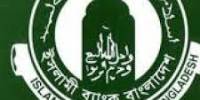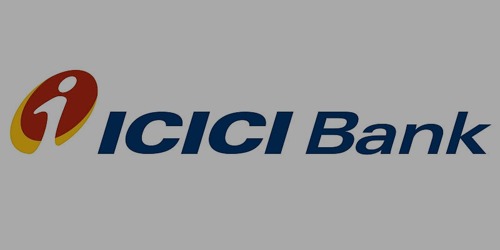History of Banking
Bangladesh inherited its banking structure from the British regime and had 49 banks and other financial institutions before the Partition of India in 1947. The Dhaka Bank established in 1806 was the first commercial bank in the Bangladesh region of British India. Bengal Bank, the first British-Patronized modern bank established in India in 1784, had opened its two branches in 1873 in Sirajganj and Chittagong of Bangladesh region. Later in 1862, the Bengal Bank Purchased the Dhaka Bank and opened its first branch in Dhaka in the same year by reconstituting and merging the Dhaka Bank. Thereafter, another branch of Bengal Bank was opened in Chandpur in 1900. A number of other branches of Bengal Bank were opened in this region and some branches had been closed in Course of time. There were six other branches of Bengal Bank in operation in the territory of Bangladesh until the Partition of British-India in 1947 and these branches were at Chittagong (1906), Mymensing (1922), Rangpur (1923), Chandpur (1924), and Narayangang (1926).
Following the emergence of Pakistan in 1947, Stat Bank of Pakistan, the Central Bank of the country, came into being in July 1948. Later, the National bank of Pakistan, a strong commercial bank was set up in 1949. In all, 36 scheduled commercial banks were in operation in the whole Pakistan until 1971. Pakistanis owned most of these banks and only three of them namely, National Bank of Pakistan, Habib Bank Ltd. and the Australasia Bank Ltd, had one branch of each in East Pakistan in 1949. During 1950-58, there other Pakistani-owned banks, Premier Bank Ltd., Bank of Bhowalpur Ltd. and Muslim Commercial Bank, had Opened their branch in East Pakistan. Four Pakistan-owned banks, the United Bank Ltd., Union Bank Ltd., Standard Bank Ltd. and the commerce Bank Ltd. Conducted banking business in the Province during 1959-1965.But all of them Had their headquarters in west Pakistan. East Pakistan had only two banks Owned by local business groups white headquarters in Dhaka. These were the Eastern Mercantile Bank Ltd. (Presently Pubali Bank Ltd.) and Eastern Banking Corporation Ltd. (Presently Uttara Bank Ltd.) established in 1959 and 1965 respectively.
In the beginning of 1971, there were 1130 branches of 12 banks in operation in East Pakistan. The foundation of independent banking system in Bangladesh was laid through the establishment of the Bangladesh Bank in 1972 by the Presidential Order No. 127of 1972 (which took effect on 16th December, 1971). Through the Order, the eastern branch of the former State Bank of Pakistan at Dhaka was renamed as the Bangladesh Bank as a full-fledged office of the central bank of Bangladesh and the entire undertaking of the State Bank of Pakistan in, and in relation to Bangladesh has been delivered to the Bank.
Bangladesh Bank has been entrusted whit all of the traditional central banking functions including the sole responsibilities of issuing currency, Keeping the reserves, formulating and managing the monetary and credit policy, regulating the banking system, stabilizing domestic and external monetary value, preserving the par value of Bangladesh Taka, fostering economic growth and development and the development of the country’s market.
The Bangladesh Banks (Nationalization) Order enacted in 1972 nationalized all banks except foreign ones. Six nationalized banks were formed through merging the existing banks of the period.
The rate of growth and development of banking sector in the country was extremely slow until 1983 when the government allowed to establish private banks and started denationalization process: initially, the Uttara Bank in the same year and thereafter, the Pubali Bank, and the Rupali Bank in 1986. Growth pattern of banks during the period 1973-1983.
Economic history shows that development has started everywhere with the banking system and its contribution towards financial development of a country is the highest in the initial stage. Schumpeter (1933) regarded the banking system as one of the two main agents (other being entrepreneurship) in the whole process of development. Keynes also emphasized the role of banking services in the process of economic development of a country, while SHE was addressing the House of Lords regarding International and Modern banking system plays a vital role for a nation’s economic development. Over the last few years the banking world has been undergoing a lot of changes due to deregulation, technological innovations, globalization etc. These changes in the banking system also brought revolutionary changes in a country’s economy. Present world is changing rapidly to face the challenge of competitive free market economy. It is well recognized that there is an urgent need for better, qualified management and better-trained staff in the dynamic global financial market. Bangladesh is no exceptions of this trend. Banking Sector in Bangladesh is facing challenges from different angles though its prospect is bright in the future.
History of Private Banks in Bangladesh
There were no domestic private commercial banks in Bangladesh until 1982; When the Arab-Bangladesh Bank Ltd. commenced private commercial banking in the country. Five more commercial banks came up in 1983 and initiated a moderate growth in banking financial institutions. Despite slow growth in number of individual lbanks, there had been a relatively higher growth of branches of nationalized commercial banks (NCBs) during 1973-83. There number had increased from 1512 in 1973-74 to4603 in 1982-83.
Financial sector reforms to strengthen the regulatory and supervisory framework for banks made headway in 2006 although at a slower than expected pace. Overall health of the banking system showed improvement since 2002 as the gross Non-performing Loans (NPL) declined from 28 percent to 14 percent while net NPL (less Provision) reduced to 8 percent from 21 percent. This led significant improvement in the profitability ratios. Although the Private Commercial Banks (PCB) NPL ratio registered a record low of 6 percent, the four Nationalized Commercial Banks (NCB) position are still weak and showed very high NPL at 25 percent. The NCBs have large capital shortfalls with a risk- weighted capital asset ratio of just 0.5 percent (June 2006) as against the required 9 percent. For the PCBs risk-weighted capital asset ratio stood at 10 percent. Bangladesh Bank issued a good number of prudential guidelines during the year 2006 and the first quarter of 2007 which among others relate to:
• rationalization of prudential norms for loan classification and provisioning,
• policy for rescheduling of loans,
• designing and enforcing an “integrated credit risk grading manual”,
• credit rating of the banks, and
• Revisions to the make-up of Tier-2 capital.
Besides, recent decision of the Government to corporative the remaining three NCBs along with the initiative to sale the Rupali Bank are bound to usher in changes in the banking sector competitiveness aspect. Bangladesh Bank has also taken up the task of implementing the Basel II capital accord. Further, the recent enactment of the Micro-credit Regulatory Authority Act (MRAA) for the regulation of the Micro Finance Institutions (MFI) has been a major development in the year 2006. Since 1998 CAMEL rating of banks gradually improved and in 2006 Bangladesh Bank updated this rating model by incorporating the market risk and the new Model is known as CAMELS.Modern banks play an important part in promoting economic development of a country. Banks provide necessary funds for executing various programs underway in the process of economic development. They collect savings of large masses of people scattered through out the country, which in the absence of banks would have remained idle and unproductive. These scattered amounts are collected, pooled together and made available to commerce and industry for meeting the requirements. Economy of Bangladesh is in the group of world’s most underdeveloped economics. One of the reasons may be its underdeveloped banking system. Government as well as different international organizations have also identified that underdeveloped banking system causes some obstacles to the process of economic development. So they have highly recommended for reforming financial sector. Since, 1990, Bangladesh government has taken a lot of financial sector reform measurements for making financial sector as well as banking sector more transparent formulation and implementation of these reform activities has also been participated by different international organization like world Bank, IMF etc.
Current Structure of Banks in Bangladesh
Bangladesh Bank (BB) has been working as the central bank since the country’s independence. Its prime jobs include issuing of currency, maintaining foreign exchange reserve and providing transaction facilities of all public monetary matters. BB is also responsible for planning the government’s monetary policy and implementing it thereby. The BB has a governing body comprising of nine members with the Governor as its chief. Apart from the head office in Dhaka, it has nine more branches, of which two in Dhaka and one each in Chittagong, Rajshahi, Khulna, Bogra, Sylhet, Rangpur, Barisal& also Sirajgong.
Nationalised Commercial Banks (NCBs)
| Name |
| 1. Sonali Bank |
| 2. Janata Bank |
| 3. Agrani Bank |
| 4. Rupali Bank |
Local Private Commercial Banks (PCBs)
| 1.Pubali Bank |
| 2.Uttara Bank |
| 3.National Bank Ltd. |
| 4.The City Bank Ltd. |
| 5.United Commercial Bank Ltd. |
| 6. Arab Bangladesh Bank Ltd. |
| 7.IFIC Bank Ltd. |
| 8.Islami bank Bangladesh Ltd. |
| 9.Al Baraka Bank Bangladesh Ltd. |
| 10.Eastern Bank Ltd. |
| 11.National Credit & Commerce Bank Ltd. |
| 12.Prime Bank Ltd. |
| 13.South East Bank Ltd. |
| 14.Dhaka Bank Ltd. |
| 15.Al-Arafah Islami Bank Ltd. |
| 16.Social Investment Bank Ltd. |
| 17.Dutch-Bangla Bank Ltd. |
| 18.Mercantile Bank Ltd. |
| 19.Standard Bank Ltd. |
| 20.One Bank Ltd. |
| 21.EXIM Bank |
| 22.Bangladesh Commerce Bank Ltd. |
| 23.Mutual Trust Bank Ltd. |
| 24.First Security Bank Ltd. |
| 25.The Premier Bank Ltd. |
| 26.Bank Asia Ltd. |
| 27.The Trust Bank Ltd. |
| 28. Shah Jalal Bank Limited (Based on Islamic Shariah) |
Foreign Banks
| 1.American Express Bank |
| 2.Standard Chartered Grindlays Bank |
| 3.Habib Bank Ltd. |
| 4.State Bank Of India |
| 5.Credit Agricole Indosuez (The Bank) |
| 6.National Bank of Pakistan |
| 7.Muslim Commercial Bank Ltd. |
| 8.City Bank NA |
| 9.Hanvit Bank Ltd. |
| 10.HSBC Ltd. |
| 11.Shamil Islami Bank Of Bahrain EC |
| 12.Standard Chartered Bank |
Development Banks
| 1.Bangladesh Krishi Bank |
| 2.RajshahiKrishiUnnayan Bank |
| 3.Bangladesh Shilpa Bank |
| 4.Bangladesh Shilpa Rin Sangstha |
| 5.Bank of Small Industries & Commerce Bangladesh Ltd. |
Other
| 1.Ansar VDP Unnayan Bank |
| 2.Bangladesh Samabai Bank Ltd. (BSBL) |
| 3.Grameen Bank |
| 4.Karmasansthan Bank |
















